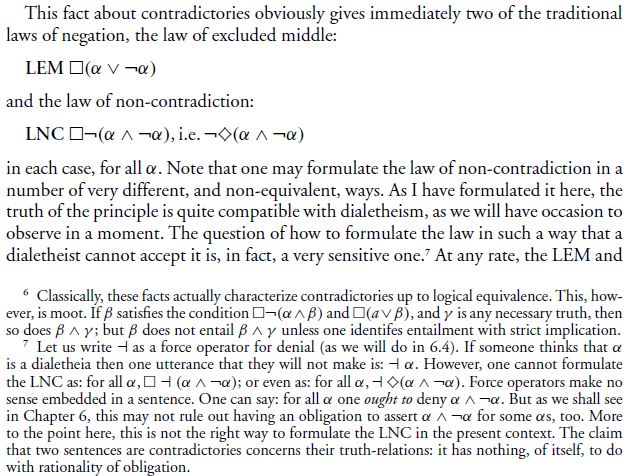Dialetheism asserts that there are sentences that are both true and false, e.g. the Liar. This seems to, quite obviously, go against the law of non-contradiction (LNC), and indeed Priest seems to agree.
Dialetheism is the view that there are dialetheias. If we define a contradiction as a couple of sentences, one of which is the negation of the other, or as a conjunction of such sentences, then dialetheism amounts to the claim that there are true contradictions. As such, dialetheism opposes—contradicts—the Law of Non-Contradiction (LNC), sometimes also called the Law of Contradiction. - SEP entry on dialetheism as written by Priest
However, the LNC is actually valid in Priest's logic of paradox (LP):
...the law of noncontradiction. One must be careful here, however, about what exactly this means. What it does not mean is that the formula ¬(P∧ ¬P) is not logically valid (i.e., true in all interpretations). Indeed this formula is valid in the semantics of LP. What it does mean is that we must come to accept some formulas of the form P∧ ¬P, since some of these are indeed true. - Logic of paradox revisited
I am confused. How can the LNC be valid in LP if dialetheism is supposed to reject it? I take it from above that by being valid, Priest meant that the LNC is provable from no premise, and thus is a logical truth as far as LP is concerned? (If the LNC is provable only from a set of premise, that doesn't seem very useful as a law, so I doubt that's the case)
I can find no such proof in Priest's Logic of Paradox paper; I tried looking for a more detailed explanation in In Contradiction and Doubt Truth To Be a Liar, but I can't find anything except a small section (attached at the bottom).
Could anyone clarify what form of the LNC exactly does Priest oppose, and point me to the relevant literature please?


